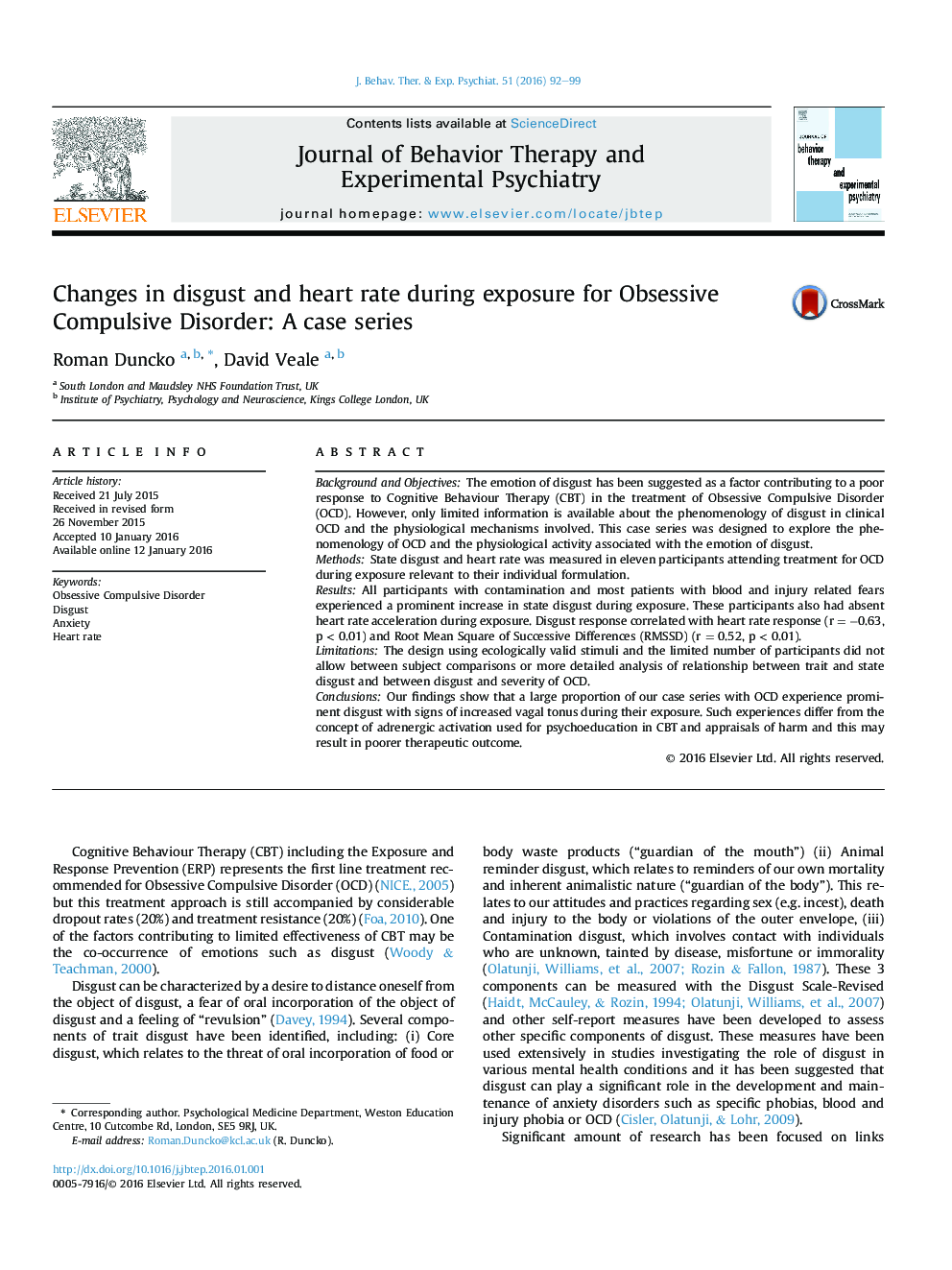| Article ID | Journal | Published Year | Pages | File Type |
|---|---|---|---|---|
| 910271 | Journal of Behavior Therapy and Experimental Psychiatry | 2016 | 8 Pages |
•State disgust and heart rate was measured in participants with OCD during exposure.•54.5% participants had increased disgust and absent heart rate acceleration.•Disgust correlated with RMSSD indicating on increased vagal tone during experiments.
Background and ObjectivesThe emotion of disgust has been suggested as a factor contributing to a poor response to Cognitive Behaviour Therapy (CBT) in the treatment of Obsessive Compulsive Disorder (OCD). However, only limited information is available about the phenomenology of disgust in clinical OCD and the physiological mechanisms involved. This case series was designed to explore the phenomenology of OCD and the physiological activity associated with the emotion of disgust.MethodsState disgust and heart rate was measured in eleven participants attending treatment for OCD during exposure relevant to their individual formulation.ResultsAll participants with contamination and most patients with blood and injury related fears experienced a prominent increase in state disgust during exposure. These participants also had absent heart rate acceleration during exposure. Disgust response correlated with heart rate response (r = −0.63, p < 0.01) and Root Mean Square of Successive Differences (RMSSD) (r = 0.52, p < 0.01).LimitationsThe design using ecologically valid stimuli and the limited number of participants did not allow between subject comparisons or more detailed analysis of relationship between trait and state disgust and between disgust and severity of OCD.ConclusionsOur findings show that a large proportion of our case series with OCD experience prominent disgust with signs of increased vagal tonus during their exposure. Such experiences differ from the concept of adrenergic activation used for psychoeducation in CBT and appraisals of harm and this may result in poorer therapeutic outcome.
